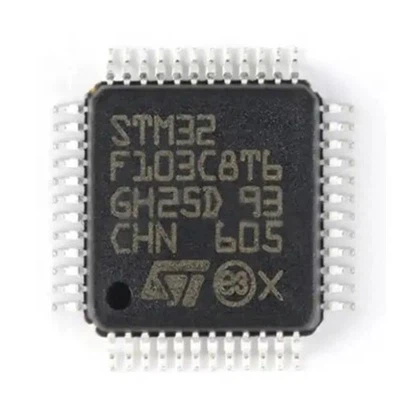Unlocking the World of Microcontrollers: A Guide to Choosing the Right One
Jul 09, 2024
Leave a message
- Microcontrollers are essential components in countless electronic devices, acting as compact computers that perform specific tasks. Understanding the different types of microcontrollers is crucial for selecting the right one for your application. This guide explores the various types of microcontrollers based on bits, memory devices, instruction sets, and memory architecture.

Microcontroller Types Based on Bits
- 8-bit Microcontrollers
- 8-bit microcontrollers are the most basic type, suitable for simple applications like toys, small appliances, and remote controls. They use an 8-bit internal bus for arithmetic and logic operations. Examples include Intel 8031/8051, PIC1x, and Motorola MC68HC11 families.

- 16-bit Microcontrollers
- These microcontrollers offer greater precision and performance than 8-bit versions. They can operate on two 16-bit numbers, providing a wider range of values per cycle (0x0000 to 0xFFFF). Examples include extended 8051XA, PIC2x, Intel 8096, and Motorola MC68HC12 families.

- 32-bit Microcontrollers
- 32-bit microcontrollers handle complex tasks and high-speed processing, making them ideal for advanced applications like medical devices, engine control systems, and embedded systems. They use 32-bit instructions for arithmetic and logic operations. Examples include the Intel/Atmel 251 family and PIC3x series.
Microcontroller Types Based on Memory Devices
- Embedded Memory Microcontroller
- These microcontrollers have all functional blocks available on a single chip, including program and data memory, I/O ports, serial communication, counters, timers, and interrupts. An example is the 8051 microcontroller.
- External Memory Microcontroller
- These microcontrollers lack some functional blocks on the chip and rely on external components. An example is the 8031 microcontroller, which does not have on-chip program memory.
Microcontroller Types Based on Instruction Set

- CISC (Complex Instruction Set Computer)
- CISC microcontrollers allow programmers to use one instruction to replace many simpler instructions, reducing the number of instructions per program.
- RISC (Reduced Instruction Set Computer)
- RISC microcontrollers focus on reducing design complexity by allowing each instruction to operate on any register or use any addressing mode, reducing clock cycles per instruction. RISC systems often outperform CISC systems in terms of execution speed.
Microcontroller Types Based on Memory Architecture
- Harvard Memory Architecture Microcontroller
- These microcontrollers have separate memory address spaces for program and data memory, allowing for faster data access and processing.
- Princeton Memory Architecture Microcontroller
- These microcontrollers use a common memory address for both program and data memory, simplifying the architecture and reducing costs.
Conclusion

- It is easier to choose the best microcontroller for a given application when one is aware of the various varieties available. The right choice for maximum performance and efficiency can be selected by understanding the classifications based on bits, memory devices, instruction sets, and memory architecture. This is true whether you need a basic 8-bit microcontroller for straightforward tasks or a powerful 32-bit microcontroller for complex applications.
- We have a large selection of microcontrollers at XRS to suit your needs. Our products are of high quality and come with testing support. Please get in touch with us if you have any microcontroller-related queries.






